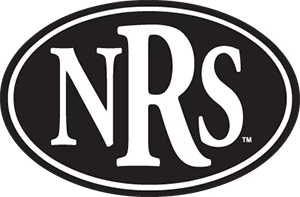The Reinsman Josey-Mitchell Copper Dog Bone Twisted Wire Short Shank Gag Bit has a great gag action from the 7" stainless steel shank cheeks and allows for quicker signaling. This gag bit features twisted wire bars with a copper wrapped dog bone center mouthpiece. This three piece gag bit with the dog bone offers additional leverage to the corners of the mouth providing a responsive feel. This is a great choice for horses that need help picking up their shoulder. This shorter shank bit gives a moderate amount of "Whoa". The twisted wire bars with the copper dogbone keeps the horse's attention without being too severe. The round ring is your headstall ring. The tear drop ring will be the rein ring. This keeps your reins in a at attention position for faster response. When fitted properly, the mouth should be sitting at the lowest position on the cheek when at rest. This allows the mouth to float upwards once pressure is applied to the rein. The curb chain should be started with a two finger spacing between the chain and horse's jaw. Tightening the curb beyond this point will increase the leverage giving you more lift and rate. You can check for correct curb chain tightness by pulling on the rein. If the cheeks do not rotate beyond a 45 degree angle the curb is at its proper beginning tightness. Stage C bits are designed for equestrians and their horses who prefer neck reining. These bits are most suitable for horses that are responsive to pressure on their poll. The product number for this Reinsman Josey-Mitchell Copper Dog Bone Twisted Wire Short Shank Gag Bit is 0119-6000 and has a lifetime warranty.
Reinsman Bit Stages
Stage A= These bits are great for starting horses, training, or maintaining steady contact. Aspects include direct reining, non-leverage Loose Rings and Dee Rings with mouthpiece diameters 5/16” and over.
Stage B =Moving from Direct Reining to Neck Reining? Stage B is all about transition, with the introduction of leverage and curb pressure. Short Shanked bits and Half-Gags comprise Stage B.
Stage C =Horses who respond well to poll pressure are in Stage C. Features include solid mouthpieces and cheek attachments, and swivel cheeks with jointed mouthpieces or low to medium ports
Stage D =Stage D is about refinement, subtle cues and quick communication. Characteristics include increased leverage, more sophisticated mouthpieces, and may also incorporate higher ports.
Stage E =When your horse enters Stage E – he’s asking for some time with the Pros. Here tiny twists, very high ports, and highly complex mouthpieces are key components


